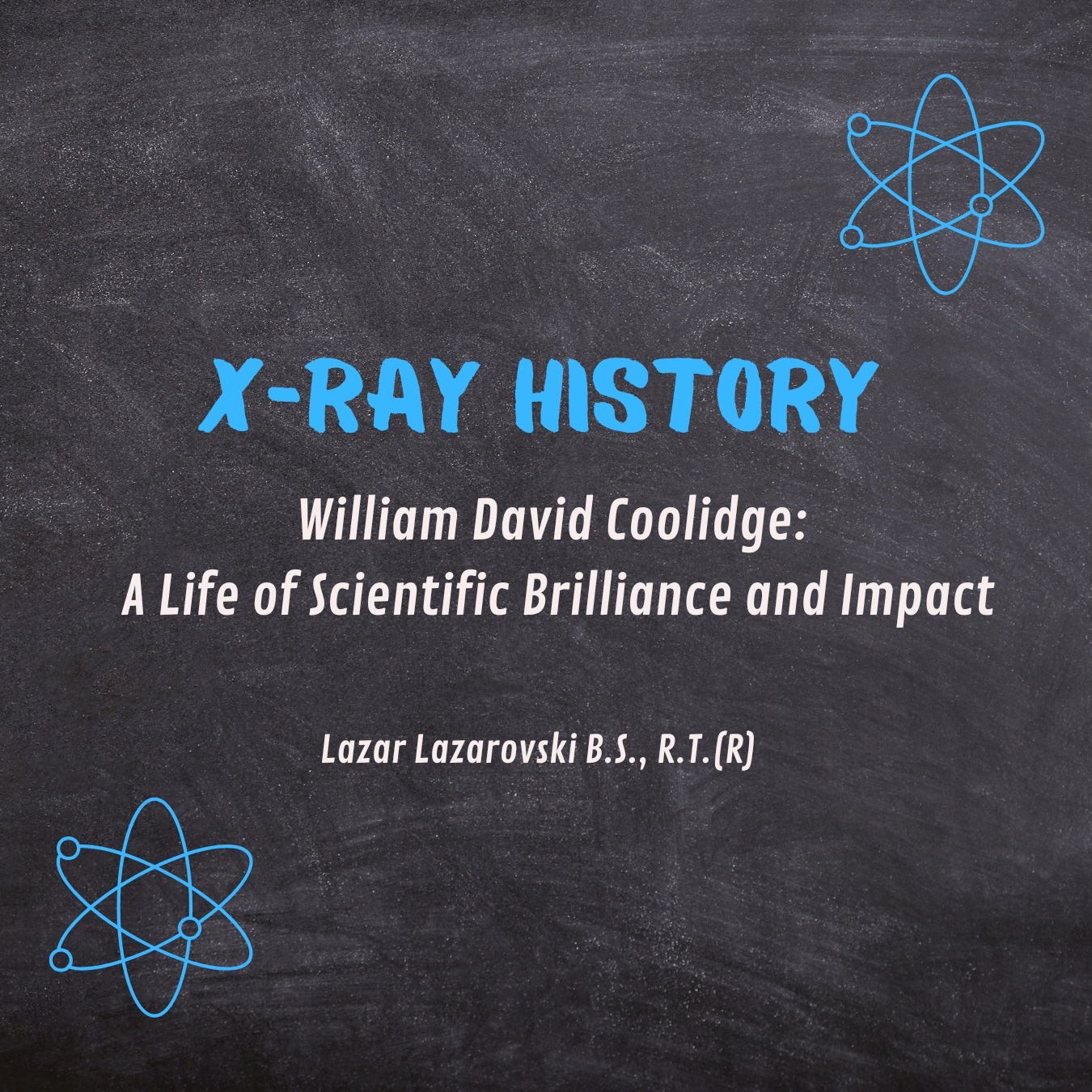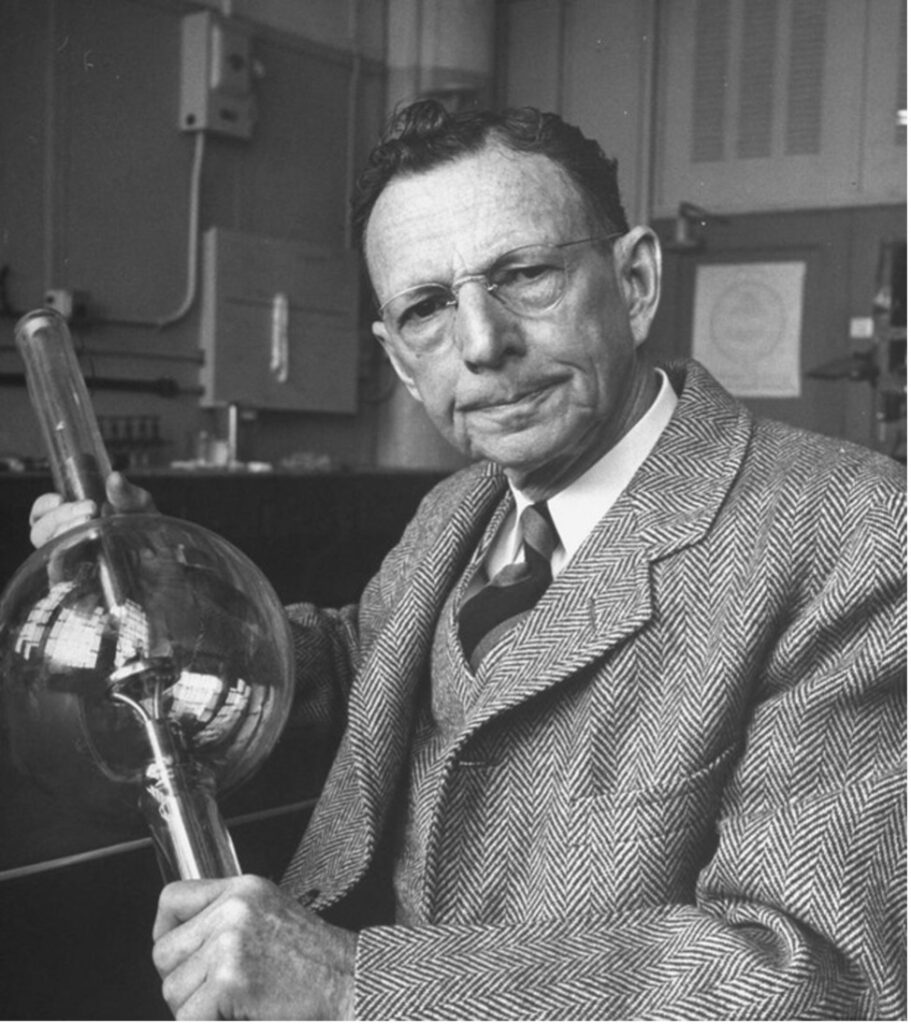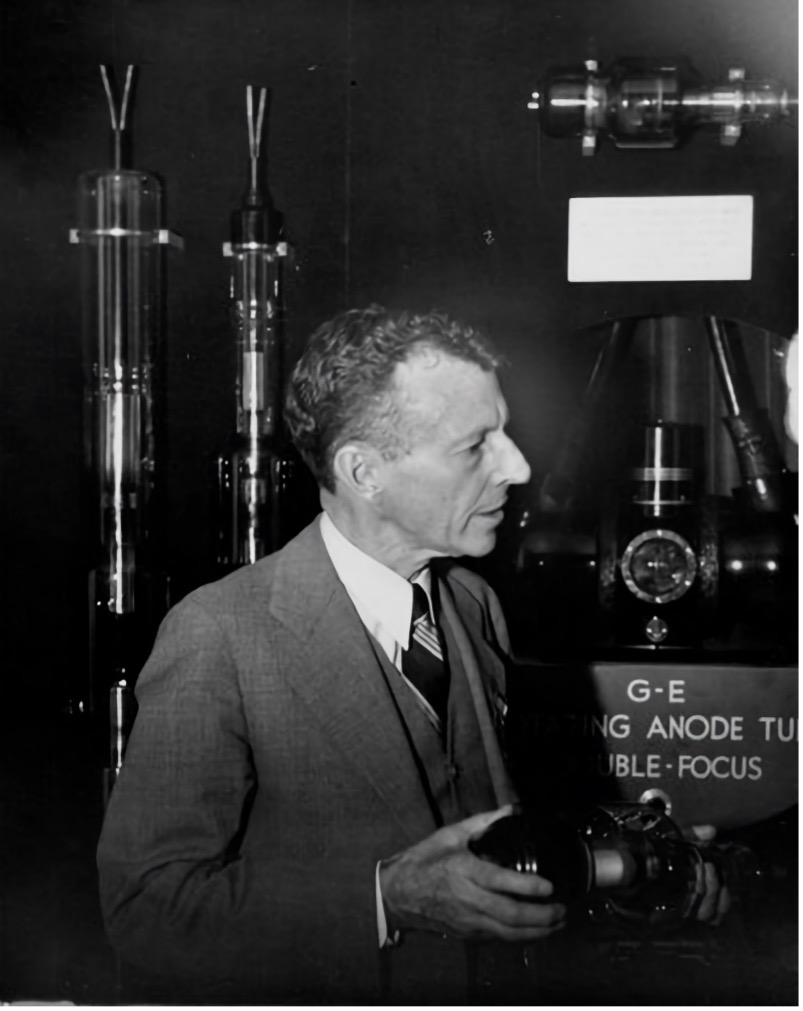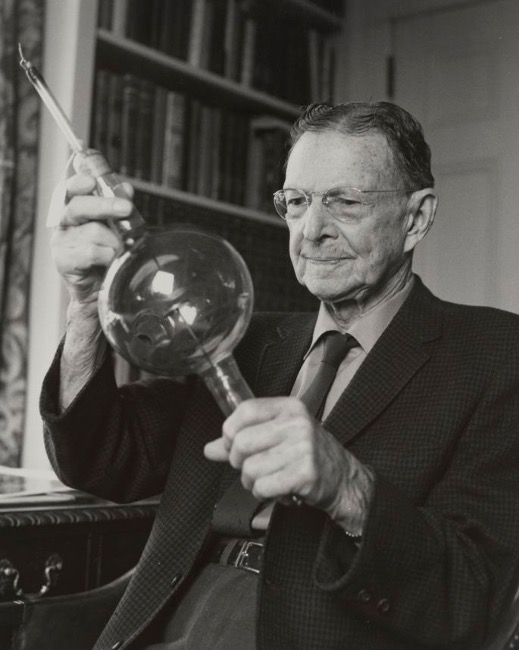
Early Life and Education
William David Coolidge was born on October 23, 1873, on a farm near Hudson, Massachusetts. The son of a farmer and a dressmaker, Coolidge’s early life was marked by modesty and hard work. From a young age, he demonstrated a remarkable intellectual curiosity and resilience, which would later define his contributions to science and industry. Raised amidst the challenges of rural life, Coolidge’s determination to excel and learn set him apart. His family instilled values of hard work and perseverance, which would guide him throughout his life.

Coolidge attended public schools and worked in a shoe factory as a boy to help support his family. Determined to pursue higher education, he financed his studies by borrowing money and earning scholarships. In 1891, Coolidge enrolled at the Massachusetts Institute of Technology (MIT), where he majored in electrical engineering. After graduating in 1896, he spent a year as a laboratory assistant at MIT. With a desire to deepen his knowledge, he traveled to Germany, enrolling at the University of Leipzig. There, he earned his Ph.D. in 1899, completing his studies with high honors. The international exposure at Leipzig broadened his perspective and equipped him with advanced knowledge in physics and chemistry.

Coolidge’s upbringing instilled in him a sense of discipline and perseverance that would serve him well in his scientific pursuits. His years at MIT and the University of Leipzig were transformative, exposing him to cutting-edge research and equipping him with the skills and knowledge to tackle some of the most pressing technological challenges of his time. These foundational experiences were pivotal in shaping his future contributions to science.
Early Career and Research at MIT
Upon returning to the United States, Coolidge resumed his academic career at MIT. From 1899 to 1905, he worked as a research assistant under Arthur A. Noyes in the Chemistry Department. During this time, he gained valuable experience in experimental techniques and solidified his reputation as a meticulous and innovative scientist. His collaborative efforts with Noyes helped him hone his ability to solve practical problems using theoretical science.

Coolidge’s early career at MIT was focused on research that would lay the groundwork for his future breakthroughs. He specialized in areas that bridged chemistry and electrical engineering, conducting experiments that highlighted his ability to combine theoretical knowledge with practical application. He explored the properties of materials, laying the foundation for his later innovations in filaments and X-ray technology. Although content in academia, his career trajectory shifted in 1905 when he was recruited by the General Electric (GE) Company’s newly established research laboratory in Schenectady, New York.

This move represented a pivotal moment in Coolidge’s life. GE’s research laboratory was one of the first of its kind, emphasizing innovation and collaboration. For Coolidge, it provided the ideal environment to pursue his scientific ambitions while contributing to technological advancements that would have a tangible impact on society. The opportunity to work at GE marked the beginning of a prolific career dedicated to research and innovation.
Contributions at General Electric
Coolidge’s move to GE marked the beginning of a prolific period of innovation. GE offered him the freedom to pursue his own research interests while aligning with the company’s commercial goals. Over the next four decades, Coolidge would leave an indelible mark on the fields of electrical engineering and medical imaging.
Coolidge’s tenure at GE was characterized not only by his technical achievements but also by his leadership. He eventually became the director of the Research Laboratory, mentoring younger scientists and engineers while steering the lab toward groundbreaking discoveries. His influence extended far beyond his own projects, shaping the trajectory of GE’s technological development and solidifying the company’s reputation as a leader in innovation.
Ductile Tungsten
One of Coolidge’s earliest achievements at GE was the development of ductile tungsten. At the time, incandescent light bulbs used carbon filaments, which were fragile and inefficient. Scientists recognized tungsten’s potential as a superior filament material due to its high melting point, but its brittleness posed a significant challenge.

Coolidge invented a method to make tungsten ductile, enabling it to be drawn into fine wires suitable for light bulb filaments. By purifying tungsten oxide and employing innovative processing techniques, he created a filament material that was both durable and efficient. In 1913, he patented his invention (US Patent No. 1,082,933). This breakthrough revolutionized the lighting industry, and modern incandescent bulbs are still manufactured using Coolidge’s method.
The development of ductile tungsten was not merely a scientific triumph but also a commercial success. GE’s adoption of tungsten filaments transformed the company into a leader in the lighting industry. For Coolidge, it was the first of many innovations that would establish his legacy as a pioneering scientist and inventor. Beyond lighting, this discovery had applications in other fields, such as vacuum technology and metallurgy, further amplifying its impact.
The Coolidge X-Ray Tube
Building on his success with tungsten, Coolidge turned his attention to the emerging field of X-ray technology. In 1913, he invented the Coolidge tube, a revolutionary X-ray tube that replaced earlier gas-filled tubes. The Coolidge tube utilized a tungsten filament as the cathode, which emitted a stream of electrons under high vacuum. These electrons bombarded a tungsten target, producing X-rays.

The Coolidge tube provided unprecedented control over the intensity and wavelength of X-rays, making it far more effective for medical diagnostics and industrial applications. Patented in 1916 (US Patent No. 1,203,495), the Coolidge tube remains the foundation of modern X-ray technology. Its invention transformed the fields of medicine and dentistry, enabling precise imaging of internal structures and improving cancer treatment.

The impact of the Coolidge tube cannot be overstated. By making X-ray technology more accessible and reliable, it revolutionized healthcare, allowing doctors and dentists to diagnose and treat conditions with a level of precision that was previously unimaginable. Coolidge’s work in this area earned him widespread acclaim and firmly established his reputation as one of the leading scientists of his generation. Moreover, his invention became a cornerstone of radiology, contributing to advancements in diagnostic imaging and therapeutic techniques.
Other Innovations
Throughout his career, Coolidge demonstrated a remarkable ability to address practical problems with scientific solutions. He contributed to the development of high-quality magnetic steel, improved ventilating fans, and the electric blanket. During World War I, he collaborated with his GE colleague Irving Langmuir to create the first successful submarine detection system. His work on submarine detection underscored his ability to adapt his expertise to address national security challenges.
Coolidge’s inventive spirit extended to the defense industry during World War II, where he conducted research on radar and radar countermeasures. His contributions to national defense were vital, showcasing his ability to apply scientific principles to pressing global challenges. Over the course of his life, he was awarded 83 patents, a testament to his ingenuity and versatility. These patents spanned diverse fields, illustrating his multidisciplinary approach to problem-solving.
Coolidge’s ability to innovate across diverse fields underscores the breadth of his expertise. From improving everyday conveniences like light bulbs to advancing critical technologies in medicine and defense, his work touched nearly every aspect of modern life. His achievements exemplified the intersection of science, technology, and societal impact.
Leadership and Recognition
In 1932, Coolidge was appointed director of GE’s research laboratory, a position he held with distinction. Known for his modesty and calm authority, he fostered an environment of collaboration and innovation. Under his leadership, the laboratory became a hub for groundbreaking research, attracting some of the brightest minds of the era. He emphasized mentorship and teamwork, ensuring that young researchers had the support and resources needed to thrive.

In 1940, Coolidge became a vice-president of General Electric, further solidifying his influence within the company. His dual roles as a scientist and executive allowed him to shape the direction of GE’s research efforts, ensuring that innovation remained at the heart of the company’s mission. He balanced administrative responsibilities with his passion for research, maintaining an active role in scientific discovery.
Coolidge’s contributions were widely recognized during his lifetime. He received numerous prestigious awards, including the IEEE Edison Medal and the Hughes Medal in 1927, the Faraday Medal in 1939, and the Duddell Medal and Prize in 1941. In 1963, the city of Remscheid, Germany, honored him with the Röntgen Medal for his pioneering work in X-ray technology. In 1975, he was inducted into the National Inventors Hall of Fame.
Despite his accolades, Coolidge remained humble. He notably declined the IEEE Edison Medal in 1926, citing the legal ruling that invalidated his ductile tungsten patent as a true invention. Nevertheless, his legacy as a scientist and innovator continued to grow. Coolidge’s humility and integrity were as remarkable as his scientific achievements. He was deeply committed to advancing knowledge and improving lives, values that guided his work throughout his career.
Retirement and Later Years
Coolidge officially retired from General Electric in 1945, although he continued to serve as a consultant for the company. He devoted his later years to hobbies such as travel and photography, maintaining an active and curious mind well into old age. His retirement years were marked by reflection and a continued passion for learning.

Coolidge’s longevity was as remarkable as his career. He passed away on February 3, 1975, at the age of 101 in Schenectady, New York. His life spanned over a century, encompassing a period of unprecedented technological progress to which he made significant contributions. His centennial life offered a unique perspective on the evolution of science and industry during one of history’s most dynamic eras.
In his later years, Coolidge often reflected on the transformative power of science and the importance of fostering curiosity and creativity in future generations. He remained an advocate for education and innovation, inspiring countless individuals to pursue careers in science and engineering. His influence extended beyond his immediate field, shaping the values and aspirations of future innovators.
Legacy
William David Coolidge’s legacy is defined by his transformative impact on science and industry. His innovations in tungsten filaments and X-ray technology not only revolutionized their respective fields but also improved the lives of countless individuals worldwide. As a scientist, engineer, and leader, Coolidge exemplified the power of intellect and perseverance to drive progress.
Today, Coolidge is remembered as one of the great pioneers of the 20th century, whose work continues to inspire and benefit society. The Coolidge tube remains a cornerstone of medical imaging, and his contributions to lighting technology have illuminated the world for over a century. His life’s work stands as a testament to the enduring value of curiosity, creativity, and dedication.
Coolidge’s story is also a reminder of the potential for science to address humanity’s greatest challenges. Through his relentless pursuit of knowledge and commitment to practical solutions, he paved the way for advancements that have shaped the modern world. William David Coolidge’s life is a testament to the transformative power of science and the enduring impact of a single individual’s vision and determination. His contributions continue to echo through the fields of science, engineering, and education, inspiring future generations to strive for excellence and innovation.
109 Cheyenne Trail
Goodlettsville, TN 37072
Website by Berry Creative